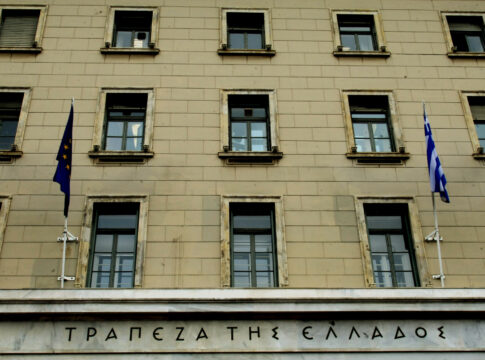The Greek economy has been on a recovery path since 2018, the year that marked the end of an anti-growth economic policy, strict fiscal discipline and unpopular reforms, which were imposed by the memoranda.
The main reason for this development was the abandonment of the anti-development policy of the memoranda and the adoption of measures that move in the opposite direction, that is, towards the strengthening of citizens’ incomes.
Since then, Greece has recorded an increase in GDP – with the exception of the “plunge” in 2020, due to the pandemic – along with an increase in investment spending and a decline in unemployment. However, GDP remains lower than that of 2010, the year the country entered the memoranda, as well as the investment expenditure, which, although increasing, is still lower compared to the level of investments in 2010.
An improvement has been recorded in employment, as, after the historic high of 27.5% in 2013, it fell to 11.1% in 2023.
Economic figures
The evolution of the Gross Domestic Product (GDP), as reflected in the data of the Hellenic Statistical Authority, shows that: At the end of 2009, shortly before the imposition of the memoranda, the GDP amounted to 237.534 billion euros, while 9 years later, at the end of 2018, when Greece exited the memoranda, the GDP stood at 179.558 billion euros.
The cumulative losses in the GDP during the period of the memoranda reached 57.976 billion euros or 24.4%. In the period of these nine years, three memoranda were signed with the representatives of our country’s lenders, the International Monetary Fund, the European Commission and the European Central Bank, through which low-interest borrowing for the Greek State and the restructuring of its debt were secured, but at the same time dozens of burdensome measures were imposed and implemented, including increases in direct and indirect taxes and cuts in wages and pensions.
The most burdensome measures enacted and implemented during this period were successive increases in excise duties on fuel, alcoholic beverages and tobacco products, the imposition of excise duties on electricity, natural gas, coffee and wine, the continuous increases in VAT rates (resulting in the basic tax rates rising from 19% and 9% to 24% and 13% where they remain to this day), the imposition of property tax initially through electricity bills and then in the form of ENFIA, the imposition of the special solidarity levy and the business tax, the reductions in the tax-free income limits of employees and pensioners, the abolition of the tax-free income limit for sole proprietorships, the increases on personal income tax rates and living standards, the abolition of holiday allowances for public sector workers and all pensioners, reductions in public and private sector workers’ pay, drastic cuts in severance pay and the abolition of collective labor agreements.
In just five years after the memoranda, from the end of 2018 to the end of 2023, due to the removal of some of the above measures, such as excessive tax increases and cuts to wages and pensions, and due to the replacement with positive measures of significant tax reductions and income support, GDP increased significantly by 40.745 billion euros or by 22.69% and soared to 220.303 billion euros, covering most of the losses it had suffered during the memorandum period.
Rapid growth
In the first five years after the exit from the memoranda, when the fiscal policy of tax increases and cuts in the incomes of employees and pensioners was abandoned and a fiscal policy of the opposite direction was adopted with tax reductions and wage and pension increases, the economy began to recover and develop at a rapid pace recovering a significant part of the losses of national income it suffered.
And this happened despite the fact that in 2020 due to the coronavirus pandemic and the restrictive measures imposed on all economic activities there was a temporary sharp drop in GDP by 9.3%














